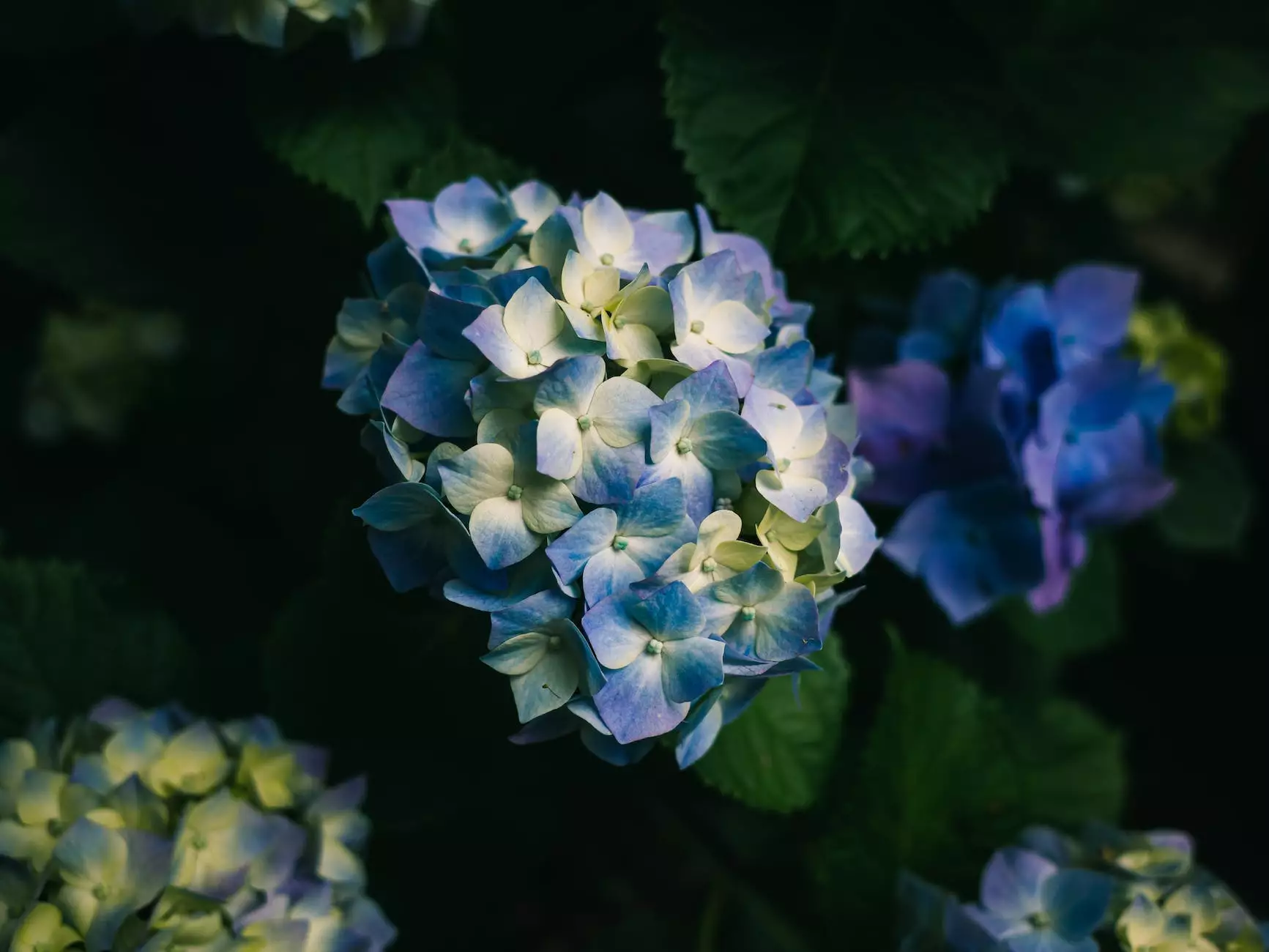How to Make Your Hydrangeas Turn Blue

Introduction
Welcome to Cutting Hedge Services, the leading experts in landscaping and gardening techniques. In this comprehensive guide, we will walk you through the steps to successfully make your hydrangeas turn blue. Whether you're a beginner or an experienced gardener, our tips and tricks will help you achieve vibrant blue hydrangea blooms.
Understanding Hydrangea Color
Before we dive into the methods, let's understand why hydrangeas can vary in color. The color of hydrangea blooms is influenced by the pH level of the soil. Acidic soil with a lower pH tends to produce blue flowers, while alkaline soil with a higher pH results in pink or purple blooms.
Testing Soil pH
The first step is to test the pH level of your soil to determine its acidity or alkalinity. There are several ways to test the pH, including using a soil testing kit or sending a soil sample to a professional laboratory. Once you have the results, you can proceed accordingly.
Acidifying Techniques
If your soil pH needs to be lowered to achieve blue hydrangea blooms, here are some effective acidifying techniques:
1. Adding Organic Matter
By incorporating organic matter such as peat moss or compost into the soil, you can gradually lower the pH level. This helps create the ideal conditions for blue hydrangea flowers to thrive.
2. Using Aluminum Sulfate
Aluminum sulfate is a commonly used additive to acidify the soil. It not only lowers the pH but also provides the necessary nutrients for healthy plant growth. Apply it according to the instructions provided, as over-application can harm the plants.
3. Applying Sulfur
Sulfur can also be used to lower the soil pH and promote blue hydrangea blooms. It is available in powdered or granular form. Follow the recommended dosage and distribute it evenly around the plants.
Maintaining Soil pH
Once you have successfully achieved the desired soil acidity, it's important to maintain it for long-lasting blue hydrangea blooms. Here are a few tips:
1. Regular Soil Testing
Periodically test the soil pH to ensure it remains in the desired range. This will help you make necessary adjustments if the pH starts to shift towards alkalinity.
2. Mulching
Mulching with materials like pine needles or bark helps to retain soil acidity. It also aids in moisture retention, which is crucial for hydrangea growth. Apply a layer of mulch around the base of the plants, taking care not to pile it against the stems.
3. Watering Techniques
Watering hydrangeas with rainwater or distilled water can prevent the introduction of alkaline elements. Avoid using tap water, which may contain minerals that can affect the soil pH.
Conclusion
Congratulations! You are now equipped with the knowledge and techniques to make your hydrangeas turn blue. With the expert guidance from Cutting Hedge Services, you can confidently transform your garden into a stunning display of vibrant blue hydrangea blooms. Remember to regularly monitor the soil pH and maintain the necessary conditions for long-lasting success. Happy gardening!




